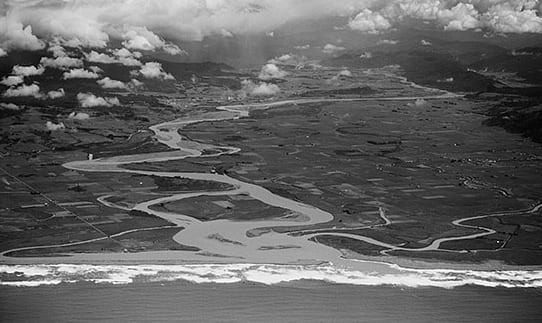Eel River Forum Tackles Issues Facing One Of California’s Great Rivers
While individuals and groups have been working to restore California’s Eel River for decades, CalTrout’s North Coast Manager Darren Mierau has added the organization’s horsepower to the fight with the formation and launch of the brand-new Eel River Forum — a group created to:
“Coordinate and integrate conservation and recovery efforts in the Eel River watershed to conserve its ecological resilience, restore its native fish populations, and protect other watershed beneficial uses. These actions are also intended to enhance the economic vitality and sustainability of human communities in the Eel River basin.”
“The Eel River is an amazing place” said Mierau. “But its native fish populations never recovered from the bad practices of the past.”
“The Eel drains 2.3 million acres and the potential is enormous, yet native fish populations are typically only 3% of their historic numbers. We think that we can work with all the stakeholders and build a better Eel.”

The Eel River
According to the story printed in the Redwood Times, public interest in the forum is high:
ERF, a coalition of public agencies, conservation groups, tribes, and other stakeholders concerned about fisheries on the Eel River, rotates the site of its monthly meetings. Its previous meeting in Benbow on Jan. 23 drew nearly 40 members of the public.
The Eel River Forum’s 21 Charter Members include many groups who have been working on the Eel for years. Charter members include:
- California Trout
- CA Department of Fish and Wildlife
- CA State Parks
- Coastal Conservancy
- Eel River Recovery Project
- Eel River Watershed Improvement Group
- Environmental Protection Information Center
- Friends of the Eel River
- Friends of the Van Duzen River
- Humboldt County Resource Conservation District
- Mendocino County Resource Conservation District
- National Marine Fisheries Service
- North Coast Regional Water Quality Control Board
- Pacific Gas and Electric Company
- Potter Valley Irrigation District
- Round Valley Indian Tribe
- Salmonid Restoration Federation
- Sonoma County Water Agency
- US Bureau of Land Management
- US Fish and Wildlife Service
- US Forest Service
- Wiyot Tribe
Currently, CalTrout’s Mierau is most involved in the the Eel River Estuary Preserve project, the Bridge Creek railroad crossing removal, Salt River and PG&E’s Potter Valley project.
CalTrout is also hosting an Eel River Forum mini-site here, where you’ll find updates on the progress of the group.





